The first of four so-called supermoons in a row is this month. On July 3, full moon will be at 11:39 Universal Time at a distance of 361,926 kilometers between the center of the earth and the center of the moon. The August 1 full moon will be closer at 357,510 kilometers. The August 31 full moon will be even closer at 357,356 kilometers. And the September 29 full moon will be farther at 361,658 kilometers. Compare those numbers to lunar apogee which exceeds 400,000 kilometers.
Having a close full moon means it will look a little bigger and a little brighter than average. Since this month’s full moon is also on the same day as southern lunistice, it will seem especially close and bright to southern hemisphere sky watchers. The lunistice declination on the 3rd is 27.8° south. The actual lunar perigee is the next day at 360,100 kilometers.
During the month, the moon crosses the equator going north on the 9th. First quarter is on the 10th. Northern lunistice is on the 16th at 27.9° north. That’s the day before new moon. It’s at apogee on the 20th at 406,300 kilometers away. It’s crossing the equator going south on the 23rd. A second southern lunistice happens this month on the 30th at 27.9° south. All dates mentioned here are in Universal Time.
As it makes its way around the sky, the moon will pass Antares on the 1st. It passes Pluto on the 4th. Note where the moon is on that night, and you can remember where Pluto is all month. You’ll need a very high end telescope and a very dark sky to see Pluto. For most of us, knowing where Pluto is, is good just for trying to impress our friends.
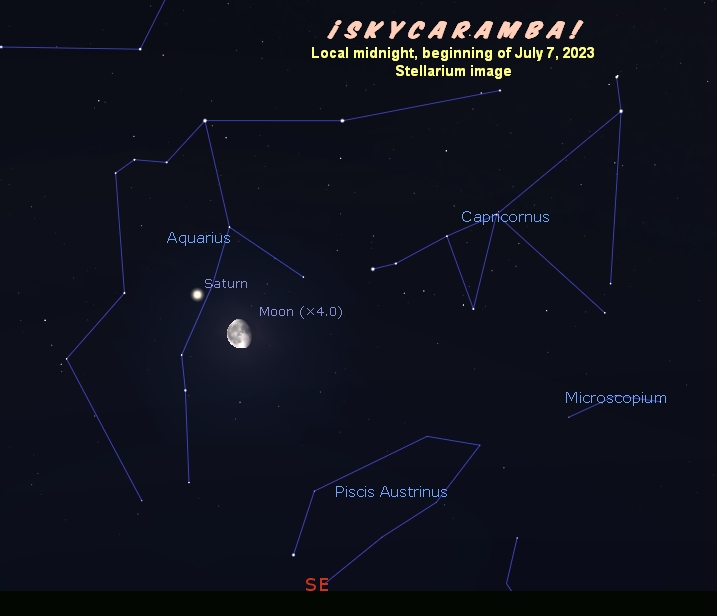
The moon passes Saturn on the 7th, then Jupiter in the morning sky on the 11th, and Uranus on the 12th. In the evening sky, the moon’s near Mercury on the 19th, Venus on the 20th, and Mars on the 21st. That’s going to be a fine few nights for planet watching. On the 25th, a first quarter moon passes Spica. Then it’s near Antares on the 28th.
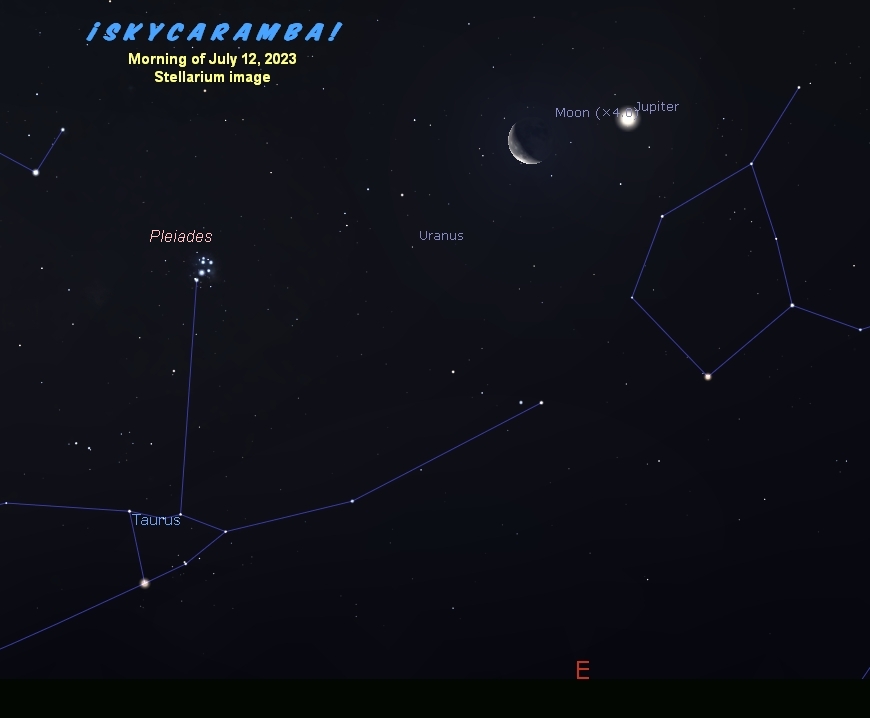

Tides
These close full moons will have an effect along ocean coastlines around the world. Tides can be very high when the moon’s full and close. And in many places, when high tide is very high, low tide is very low. People generally understand that the moon has something to do with the tides. But the most common idea of how tides work isn’t correct.
Maybe for you, it started in grade school when a teacher explained that the moon’s gravity pulls on Earth’s water and causes the tides. That’s a partial explanation. It leaves out the rest of what’s happening and gives the impression that the moon’s gravity is very selective, somehow not pulling on anything else, and pulling only on the water that’s in the ocean. Think about it. The tides barely affect huge lakes and you don’t notice any tidal effect in a swimming pool or a sinkful of dishwater you forgot to drain. Plus, most places with tides have high tide twice a day. The moon’s closest to any point on Earth just once a day. There’s more going on.
The moon’s gravity is actually pulling on everything on Earth. That’s how gravity works. If something has mass or energy, it’s affected by gravity. Even light beams follow curved paths around black holes because the gravity’s that strong. As the moon goes around the earth, it tugs on its parent planet. The earth has more mass and tugs back. The result is like when a big, strong adult and a small child pull on a rope in tug-of-war. The adult’s harder to move and the child goes along with the tugs. So, the moon goes around the earth.
That’s not to say the moon’s gravitational pull on Earth is inconsequential. Earth actually is nudged a little by the moon. And that’s what causes the tides. It’s comparable to having glass of water and moving it back and forth on the tabletop. The water sloshes back and forth, getting high on one side of the glass and low on the other. You’re moving the glass and the water together, but the glass and the water get out of sync because the glass isn’t fluid. On Earth, land masses aren’t fluid but water is, so the oceans get sloshed around in tides.
You don’t see the same effect in swimming pools and sinks, because the containers are too small. The change in force is applied more quickly throughout the container and the liquid, negating any tidal effect. Same thing with the Coriolis effect, which makes ocean currents curve but some people wrongly think has something to do with which way the water swirls when they flush the toilet.
Other events
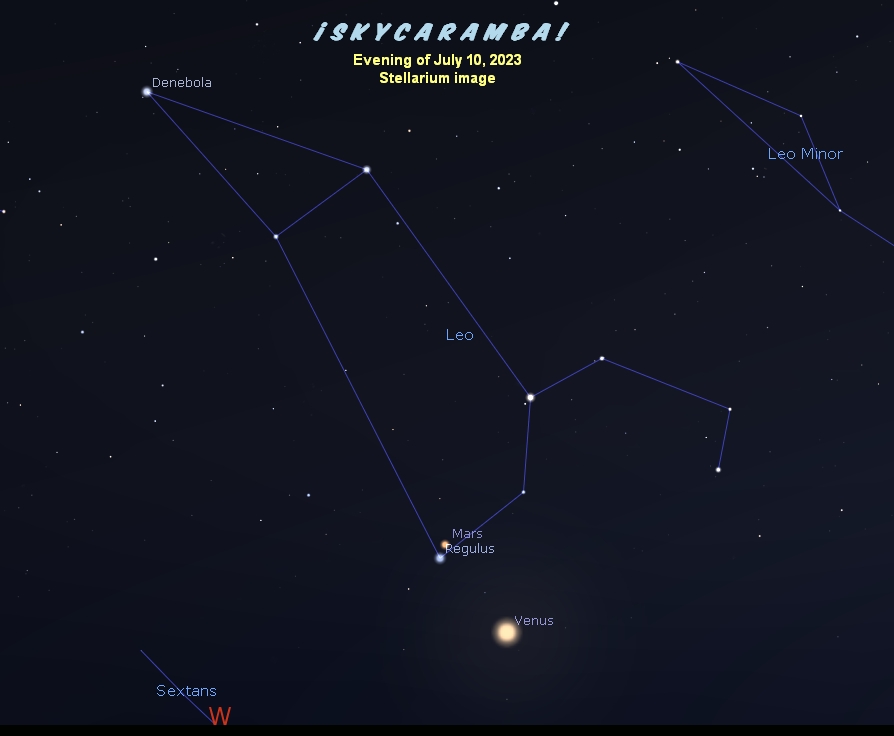
Mercury starts July at superior conjunction. You’ll have a good chance to spot it in the evening sky on the 19th when a thin, crescent moon is 3.3° away. The planet gets as close as 5.1° away from Venus on the 27th.
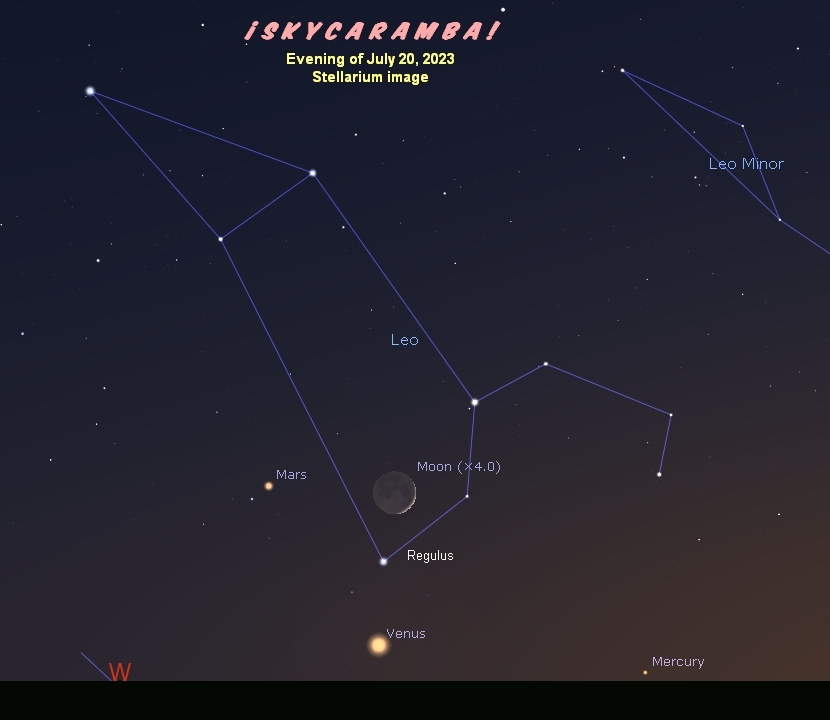
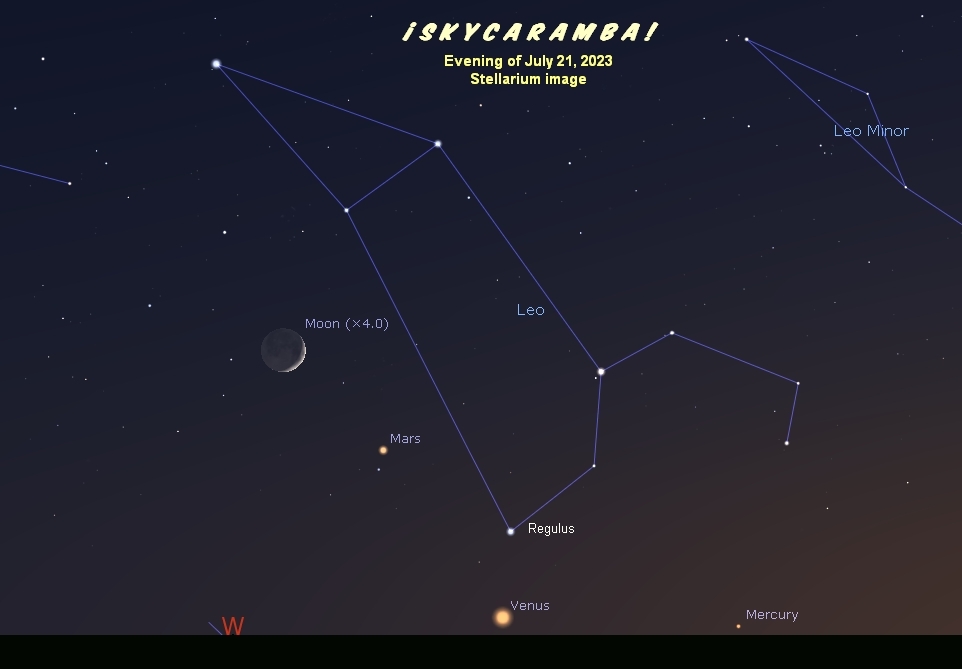
Venus and Mars are 3.9° from each other on the 1st. Venus has been following Mars through Gemini and Cancer for a few months now, even traipsing through the Beehive Cluster on a trek toward Leo. But Venus was at greatest elongation last month. It’s soon to head sunward. It will make it to the heart of the lion on the 16th, 3.5° from Regulus. This month’s Venus-moon conjunction won’t be a very close one. The two are 7.3° apart on the 20th.
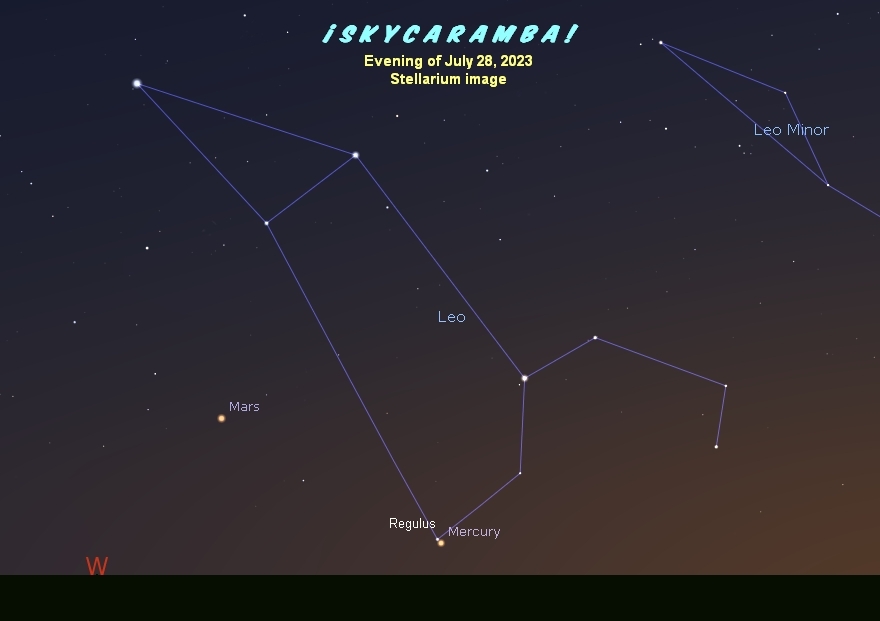
Mars is traveling through Leo. The moon is 3.0° from the red planet on the 21st. The planet’s northern solstice is on the 12th. That’s the equivalent of Earth’s June solstice.
Saturn rises in late evening in Aquarius. It’s moving very slowly retrograde. In a telescope, watch the gas ball’s shadow on the rings get harder to see as the sun, Earth, and Saturn get closer to alignment.
Jupiter is a morning object. It’s moving eastward just above Cetus the sea monster’s head.
Pluto is at opposition on the 22nd at 33.8 astronomical units, or average earth-sun distances from us.
Earth is at aphelion, its farthest from the sun on the 6th. Our planet will be 1.017 astronomical units from the sun on that day. That’s right. One astronomical unit is an average earth-sun distance. The actual distance gets as high as 1.017 times the average.
Two meteor showers have their peaks on the 30th. One’s meteors are faint and the others are few. The Alpha Capricornids shower peaks at around five per hour for now. But about two to three hundred years from now, it’s expected to be a regular major shower when dust from the parent comet orbits into Earth’s path. The Southern Delta Aquariids number 15 to 20 per hour at the peak. The meteors are hard to see if you don’t have a dark sky. And the moon’s almost full at the shower’s peak.
